Your Ultimate Guide to Different Types of Sealing Machines
Sealing plays an integral role in the packaging process. A good seal can keep your packaged products fresh, intact, and tamper-evident with a longer shelf life. How do you get the perfect packaging seals? All you need is a reliable sealing machine.
When you google "sealing machines," a ton of search results will pop up in front of you. That's because sealing machines come in many different types. They vary in design, sealing method, application, packaging material, and more. To find the right one, you at least need to know what types of sealing machines are available. Let's explore some popular picks.
What is a Sealing Machine?
A sealing machine is a piece of equipment that creates an airtight seal at the opening of a container. The seal protects solids, liquids, and contents in other forms inside the container against leakage, contamination, or tampering.
As for the containers, sealing machines can handle bottles, jars, bags, pouches, trays, tubes, blister packs, boxes, and cartons. This makes these machines a must-have for many packaging businesses. If you're working with the following industries, sealing machines can be a trustworthy partner to help maintain your product quality and integrity.
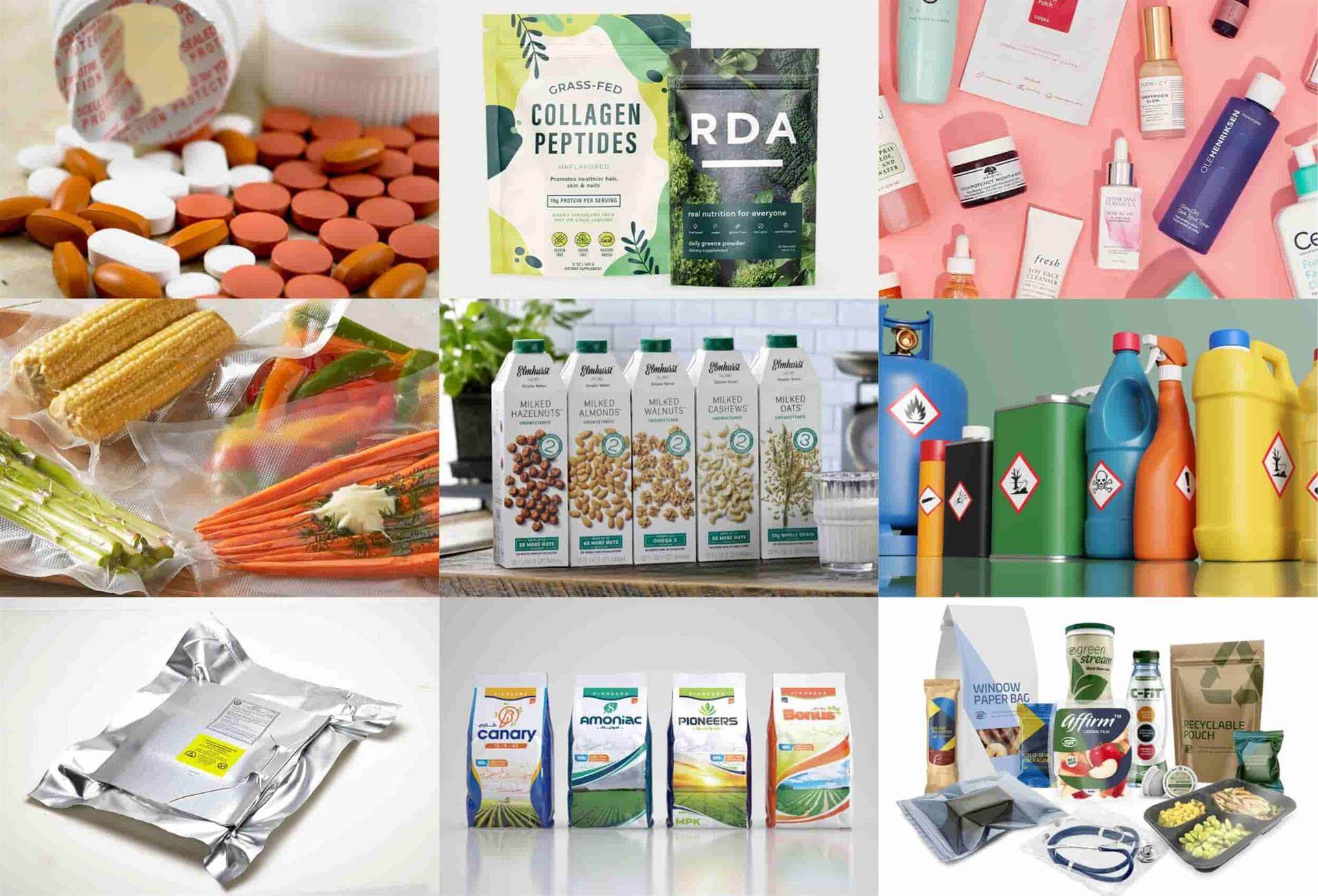
- Pharmaceuticals
- Nutraceuticals
- Cosmetics and personal care
- Food and beverages
- Chemicals
- Electronics
- Agriculture
- Retail
Different Types of Sealing Machines
Sealing machines can be classified based on various criteria. The sealing method is one of the crucial factors. Based on this, let's dive into the most common and widely used sealing machines in the world of packaging.
1. Heat Sealing Machines
Heat sealing is the most common sealing method in the packaging industry. Compared to chemical bonding that may create toxic substances, heat is a simpler and safer way of sealing. A heat sealing machine creates a bond between packaging materials at a certain temperature and pressure. The heating elements of this machine typically come in bars, jaws, or other designs.
This type of sealing machine generates heat in the sealing bars or jaws. When the bars or jaws are pressed against each other, the heat melts the packaging material placed between the heating elements. Then, the melted material fuses together to form a secure seal. Heat sealing machines are usually used for sealing packaging made of thermoplastic materials.
As a go-to sealing machine, heat sealers have a lot of options available on the market. They include impulse sealers, constant heat sealers, continuous band sealers, and L-bar sealers. Here's a comparison table of these four types of sealing machines to give you a rough idea.
|
Feature |
Impulse Sealer |
Constant Heat Sealer |
Continuous Band Sealer |
L-Bar Sealer |
|
Sealing Mechanism |
Impulse of electrical current for a burst of heat |
Constant heat |
Circulating heated bands and cooling zone |
Heat and pressure with cutting capability |
|
Heat Source |
Electrical impulse |
Electric heating element |
Electric heating element |
Electric heating elements with cutting blades |
|
Cooling Time |
Quick cooling after sealing |
Requires cooling |
Cooling after heat sealing |
Quick cooling after sealing and cutting |
|
Material Compatibility |
Thinner packaging materials like PE or PP |
Thicker or laminated materials |
PE, PP, laminates, and some heat-sealable foils |
PO, PP, and PVC shrink wrap |
|
Speed and Automation |
Quick sealing, minimal automation |
Moderate speed, consistent sealing |
High-speed, consistent with automation |
Efficient sealing and cutting in one process |
|
Application |
Effective for lightweight sealing applications |
Versatile for various packaging materials |
Effective for high-volume production and sealing of various materials |
Well-suited for creating neatly packaged products and sealing irregularly shaped items |
|
Usability |
Operator-friendly and suitable for small-scale operations |
Requires some cooling time and more control |
Higher degree of automation, can operate vertically or horizontally |
Efficient packaging with integrated cutting |
a. Impulse Sealers

An impulse sealing machine works by using an impulse of electrical current to generate a burst of heat to create a tight seal. This means the device only heats up for sealing and cools down quickly after use.
The quick sealing operation is one of the advantages of impulse sealers. This somehow protects the operator from burns on the heating elements. Additionally, this makes impulse sealers ideal for fusing thinner packaging materials such as PE or PP.
b. Constant Heat Sealers
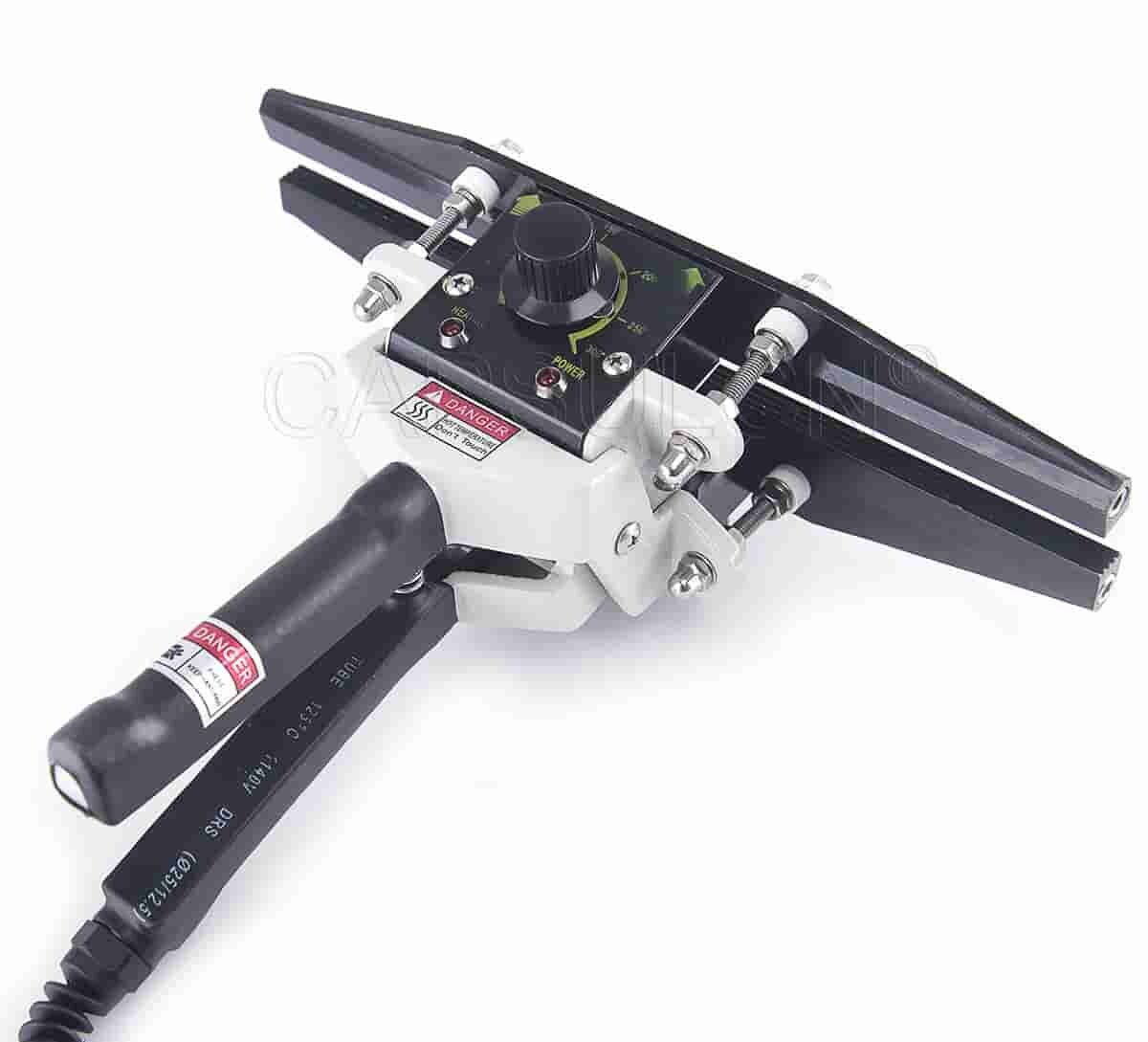
A constant heat sealer is also known as a direct heat sealer. Unlike impulse sealers, this type of heat sealing machine requires time to heat up. The sealing process involves keeping constant heat in the sealing jaws as long as it's powered on to create a long-lasting bond on the packaging.
Thanks to the permanent heat and pressure applied, this sealer features great heat penetration. This allows the machine to handle thicker or laminated packaging material.
c. Continuous Band Sealers
A continuous band sealer is also one of the common types of sealing machines that use heat to seal packaging. This device comprises a conveyor belt and bands that allow continuous sealing operations. How does it work? The packaging is fed into the machine on the conveyor belt. The bag or pouch is gripped and carried through the circulating heated bands. Then, the melted material travels from the heated zone to the cooling zone, forming a strong bond.
Compared to impulse and constant sealers, continuous band sealers can provide high-speed and consistent seals. These machines feature a higher degree of automation and can be adjusted to handle a wide range of packaging materials. These machines can operate in vertical or horizontal orientation.
d. L-Bar Sealers
L-bar sealers are also a type of shrink wrap machine. This machine consists of two sealing bars forming an L shape. As with its siblings in the category, this sealer uses heat and pressure to create a secure seal. However, unlike other heat sealers, it has a unique feature - cutting.
The sealing process of this sealer is simple: Insert the product to be packaged into the center-fold shrink film. Place the material on the base of the sealer. Press the sealing bars down to seal and cut off excess material. Then, a neat L-shaped seal is created on two sides of the package.
L-bar sealers can be standalone or paired with a shrink tunnel. This combination system has a conveyor to transport the product from the sealing station to the shrinking station. This greatly improves packaging speed and output.
2. Induction Sealers
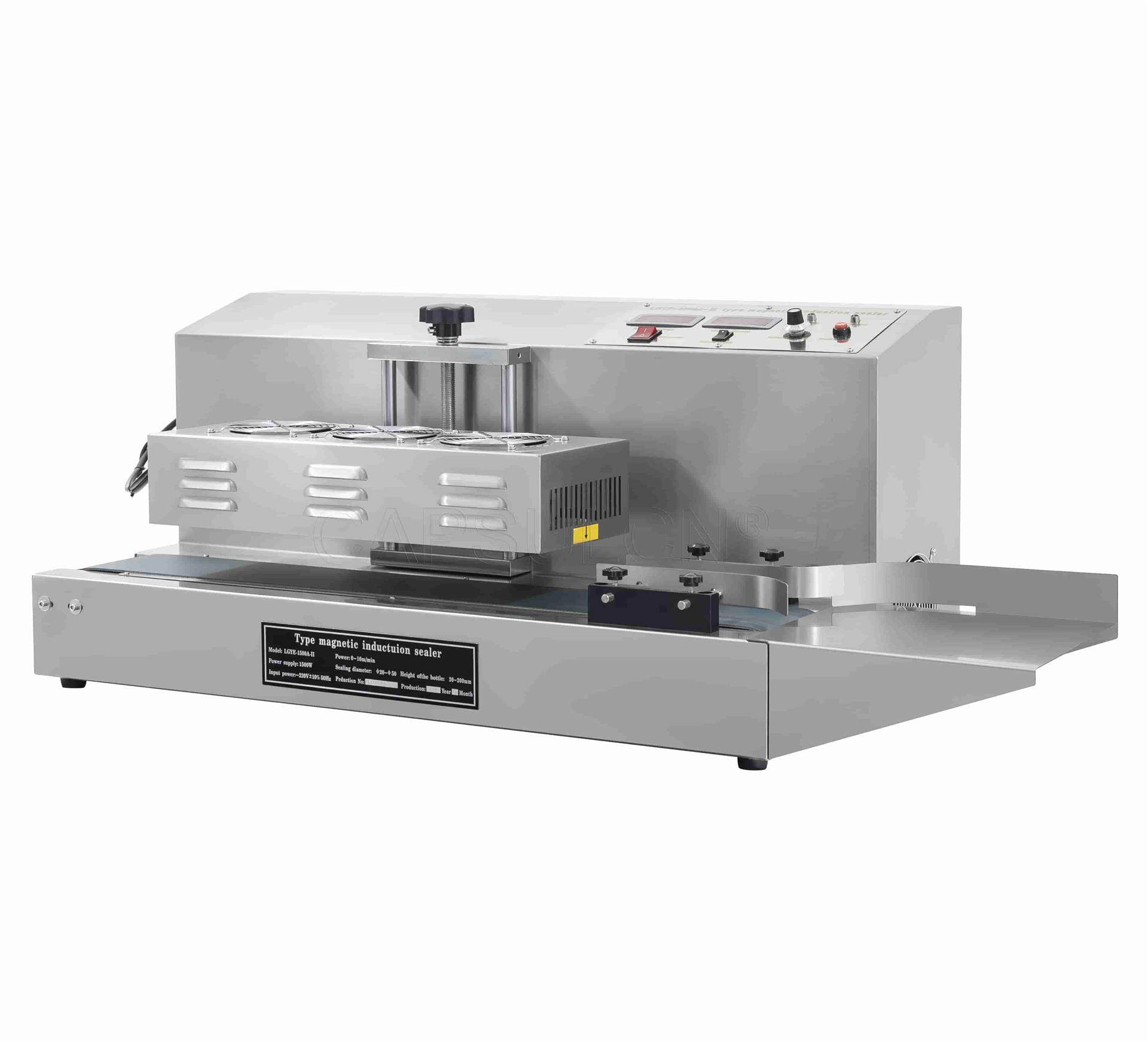
You may be wondering what's the difference between heat sealer and induction sealer? Simply put, heat sealers are perfect for sealing bags and pouches, while induction sealers are the essential tools to secure contents inside bottles and jars. Unlike heat sealing machines, induction sealers apply a non-contact heating method to seal the lip of a container.
These types of sealing machines utilize electromagnetic induction to generate high heat for sealing. When the capped container enters the heating zone, the polymer layer in the aluminum foil cap liner melts and creates a hermetic seal on the container's mouth.
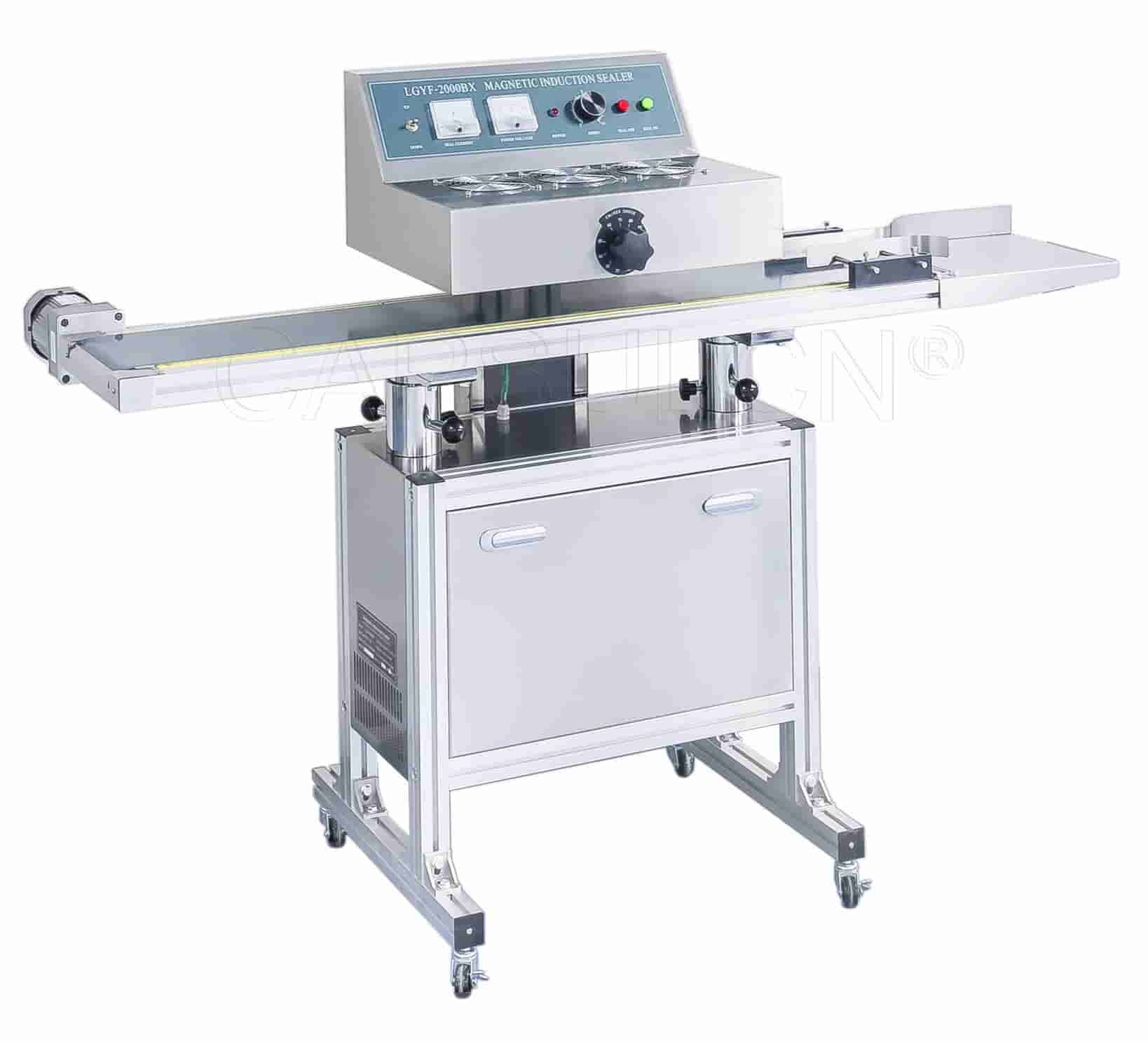
To meet different sealing needs, induction sealers also offer multiple options to choose from, including portable induction sealers, continuous induction sealers, and capless induction sealers. What's the Best Induction Sealer? Get in touch with us today!
3. Vacuum Sealers
The sealing process involved in a vacuum sealer is typically to remove all the air from inside the packaging. The machine then uses heated bars or bands to create a seal. Vacuum sealers do a great job of keeping the contents inside the package fresh with a longer shelf life. Therefore, these types of sealing machines are ideal for sealing items that require protection from air and moisture.
Nozzle vacuum band sealers are a popular choice for high-speed sealing. As the name suggests, these sealing machines come with a versatile nozzle. The function is usually controlled by a foot pedal switch. Once the vacuuming process is complete, the nozzle pivots, and the bag passes between the heated bands for sealing. In addition to the air suction option, a gas flush setting is available to inflate the bag with air before sealing.
4. Ultrasonic Sealers
An ultrasonic sealer employs high-frequency vibrations to seamlessly meld thermoplastic materials together. This device is widely used in the realms of packaging, textiles, automotive, and electronics. When the vibrations generate heat and friction, the sealer applies pressure to allow packaging materials to fuse together effortlessly.
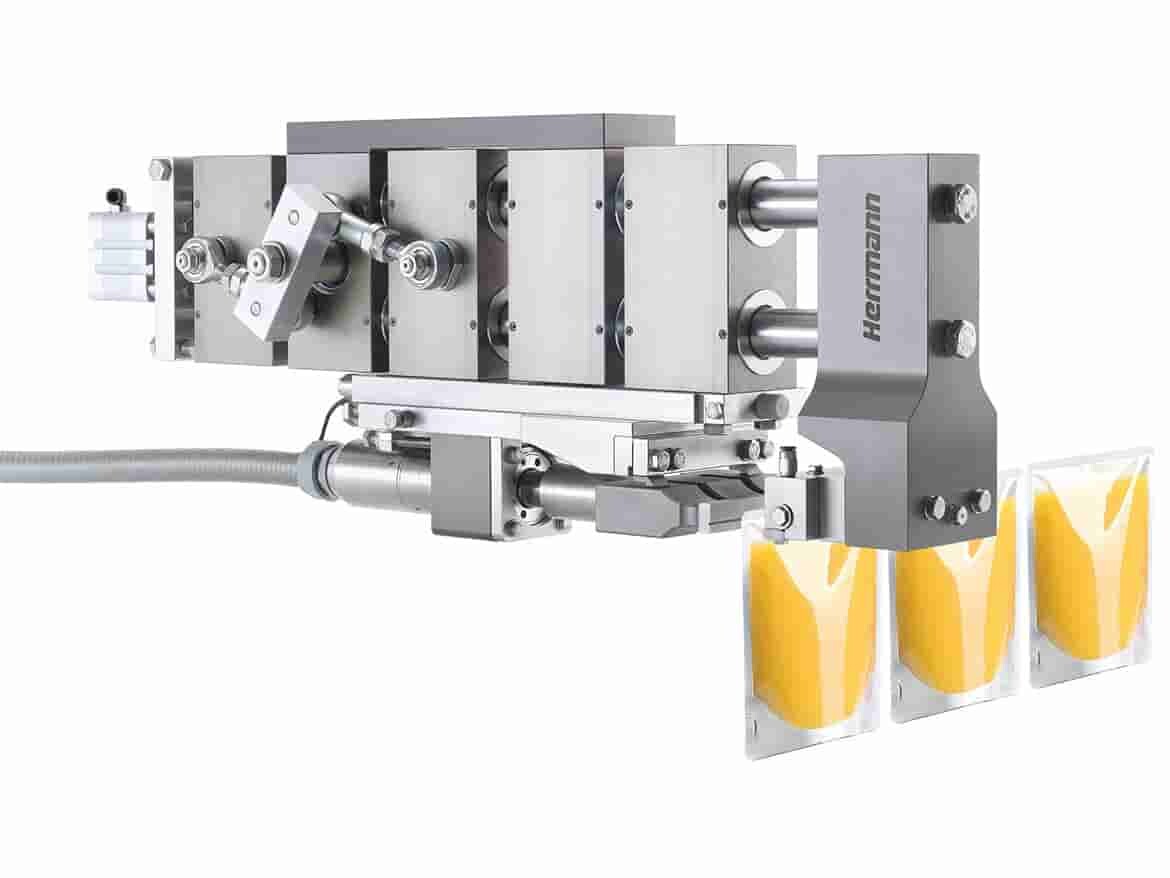
(Image Source: Herrmann Ultrasonics)
The sealing speed sets ultrasonic sealers apart. In these machines, all sealing parameters can be precisely controlled to create a clean and strong bond. Moreover, ultrasonic sealers can handle various shapes and contours with finesse.
The Bottom Line
Choosing the right sealing machine for your packaging needs can be a game-changer. Our guide is here to be your trusty companion in making a savvy decision. We've got the lowdown on the various types of sealing machines and their unique capabilities. Ready to unravel more secrets of efficient sealing? Reach out to us today!
Leave your comment
Also Offers


Containment Automatic Capsule Filling Machine SFK-703

Fully Automatic Dosator Capsule Filling Machine CZ-40

Our Team
As an expert in the pharmaceutical and pharmaceutical packaging industry, iPharMachine has provided solutions for hundreds of pharmaceutical and health product manufacturers for 17 years. By visiting customers, we get good reviews from our customers.
- info@ipharmachine.com
- English Español Deutsche







